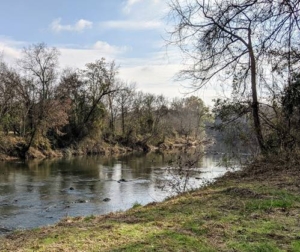MVP Southgate team members responsible for the design, construction and operation of the proposed natural gas transmission pipeline have worked hard with federal and state agencies to minimize the project’s potential impacts on the environment.
Those efforts were validated in the Federal Energy Regulatory Commission’s Final Environmental Impact Statement, which found the project could be built safely and with limited adverse impacts. Throughout the rigorous federal and state regulatory review processes, the MVP Southgate team has consistently demonstrated its commitment to protecting sensitive resourcesand raised the bar for linear infrastructure development.
The team has committed to:
- Reducing the permanently maintained corridor to only a 10-foot corridor instead of the originally proposed 50 feet in wetland and waterbody areas.
- Reducing the right-of-way during construction from 100 feet to 75 feet in most wetlands and at waterbody crossings.
- Avoiding any crossing of the Haw River.
- Proposing horizontal directional drilling to cross the Dan River and Stony Creek, and conventional bore techniques to cross Cascade, Deep and Wolf Island creeks, both of which would avoid direct impacts to the waterbodies and aquatic habitats.
- Pledging not to use herbicides within 100 feet of wetlands or waterbodies unless directed to do so by an appropriate public agency.
- Exceeding state minimum standards for erosion and sediment control.
Since the project was announced in 2018 to meet local demand for natural gas, the team has made more than 1,200 adjustments to the proposed route. The majority of those adjustments have been based on landowner feedback, engineering considerations and efforts to avoid sensitive environmental resources.
Additional adjustments encompass 41 non-perpendicular crossings through riparian buffers of waterbodies in North Carolina’s protected Jordan Lake watershed. Under existing regulations, such crossings would’ve required a variance.
The project team spent months evaluating alternative route design and crossing methods at these 41 locations and determined it will incorporate adjustments at these crossings that will exceed standard environmental protection standards. The decision involves modifying certain crossings from an open-cut to the bore method, while in other instances the project will adjust its footprint or shift the route to allow for perpendicular crossings. This also will result in fewer “additional temporary workspaces” within 50 feet of wetlands or waterbodies.
These additional efforts will complement measures already recognized by the North Carolina Department of Environmental Quality as resulting in no permanent impact to the bed and bank of waterbodies, and no permanent loss of wetlands.
The FERC’s FEIS also notes it expects “no impacts to Jordan Lake’s water quality or function,” and “no significant or permanent impacts to surface water or groundwater resources” as a result of the project’s construction and operation. Read more about the FEIS here.




